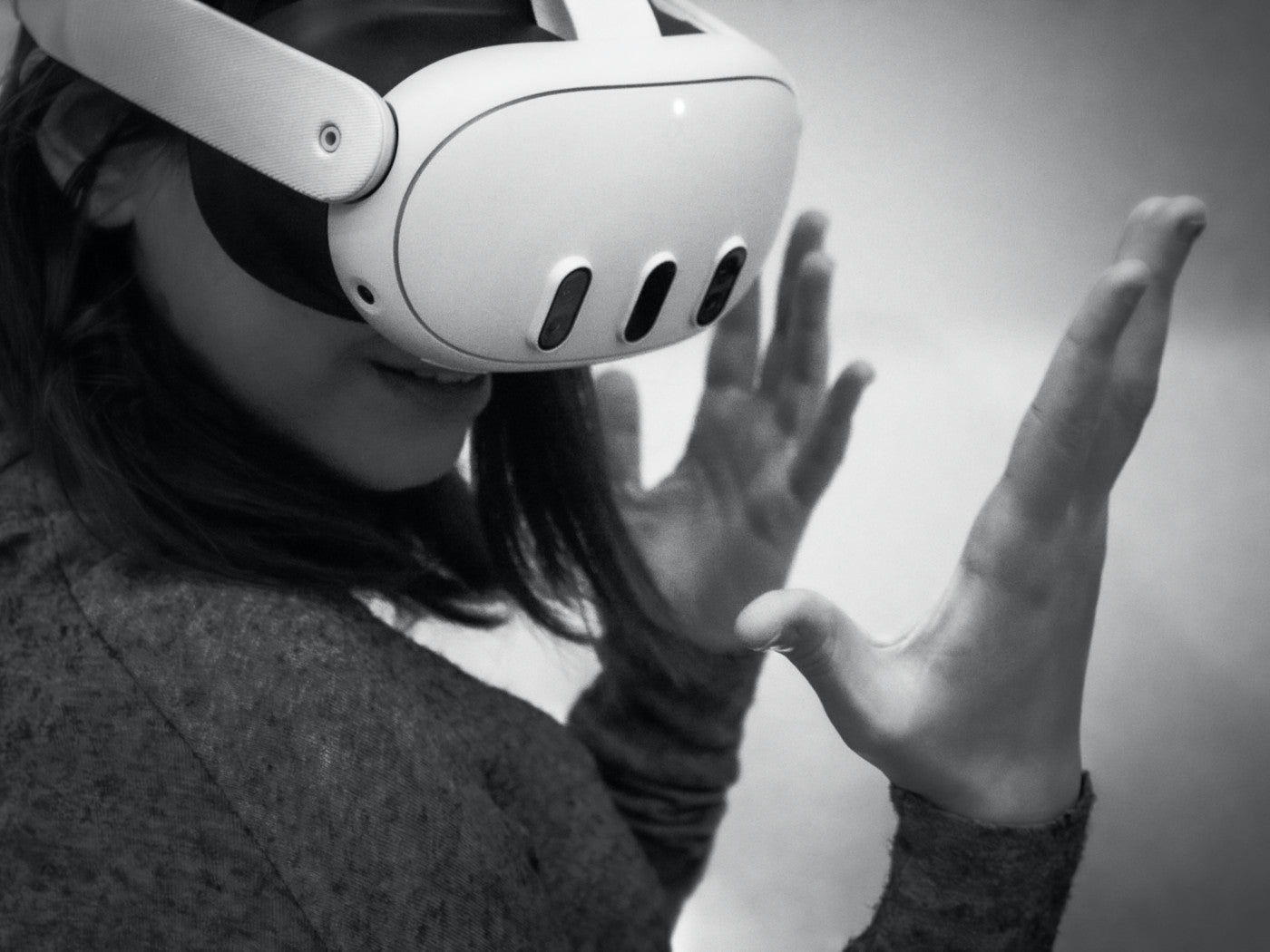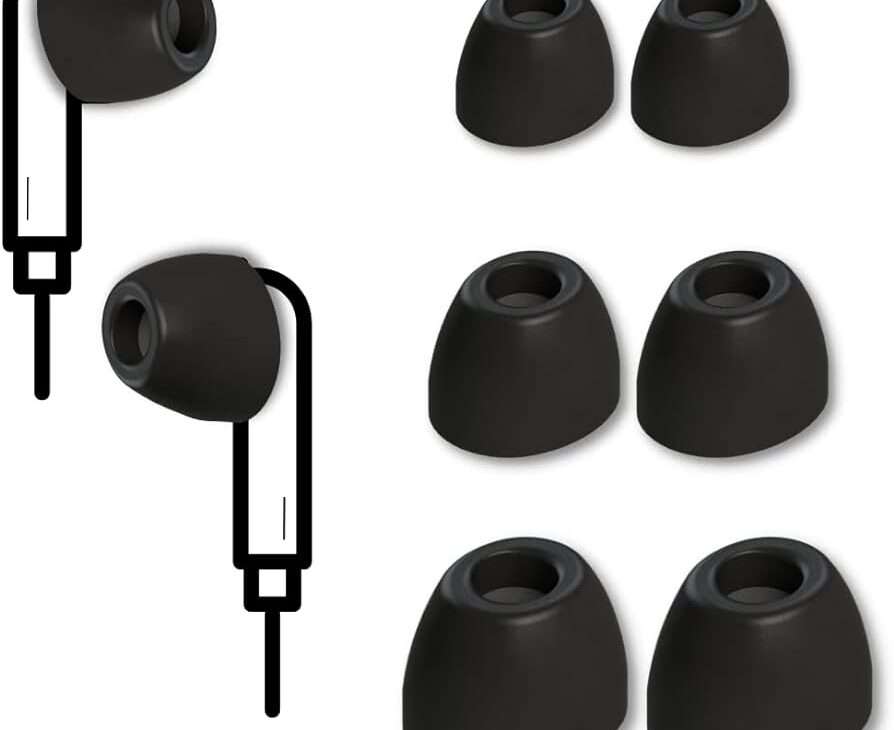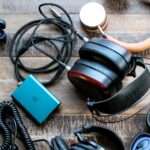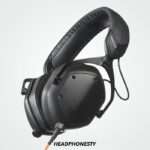Headphone comfort depends on ear cup material, weight, clamping force, and adjustability. Balancing these elements ensures long-lasting wearability without strain.
Headphones have become a vital part of our daily lives, whether it is to listen to our favorite music, gaming sessions, or conference calls, or to separate ourselves from the outside world.
Do you frequently experience headaches or ear pain after wearing your headphones for an extended duration? If so, you’re not alone; many users encounter discomfort with their headphones. Let’s examine this issue and seek a solution that addresses these common problems.
Factors Influencing Headphone Comfort
1. Weight
The weight of headphones plays a significant role in comfort, particularly for extended use. Headphones that are too heavy can lead to neck strain and discomfort, while lighter models tend to be more wearable for long sessions.
A comfortable weight range for over-ear headphones is typically between 200-350 grams. Heavier headphones often have more robust components, but brands like Bose and Sony offer lightweight designs without sacrificing sound quality.
- Tip: Choose lightweight models if you plan to wear headphones for hours. Lightweight materials like aluminum or plastic frames reduce strain.
2. Clamping Force
Clamping force refers to the pressure the ear cups exert on the sides of your head. Too much force can cause discomfort, especially around the temples and jaw. A balanced clamping force is essential to ensure a secure fit without causing pain.
- Ideal Clamping Range: Between 1.2 and 1.5 lbs of pressure is optimal for most users, though personal preference and head size affect individual comfort levels.
3. Ear Cup Material
Ear cup padding and material are key to comfort, especially during extended listening periods. Memory foam is popular because it conforms to the ear’s shape while providing cushioning.
The outer material also matters—leather, faux leather, and velour are the most common choices.
- Leather and Faux Leather: Provides a snug, sealed fit but may cause sweat buildup in warm environments.
- Velour: Breathable and soft but may allow more sound leakage.
Studies show that 80% of users prefer memory foam ear cups with velour or leather coverings for comfort and durability.
4. Headband Padding and Adjustability
Headbands that are too rigid or lack sufficient padding can cause discomfort on the top of the head. Look for headphones with a padded headband, which distributes weight evenly across the scalp.
Adjustability is another crucial factor, ensuring a proper fit for different head sizes.
- Tip: Adjustable headbands with enough flexibility reduce pressure points and offer a customized fit.
5. Earcup Design
The design of ear cups, whether over-ear, on-ear, or in-ear, affects comfort and noise isolation to different extents.
Over-ear headphones enclose the ears fully, ensuring pressure is distributed evenly.
On-ear headphones sit on the outer ear, which might lead to discomfort with prolonged wear.
In-ear headphones are inserted snugly into the ear canal, offering a secure fit but possibly causing discomfort for certain users.
How to Measure Comfort Levels
1. Pressure Distribution
Headphones should distribute pressure evenly across the ears and the top of the head. Models with thicker padding in the headband and memory foam ear cups tend to perform better in terms of pressure distribution.
User comfort ratings often highlight models like the Beyerdynamic DT 770 Pro and the Sony WH-1000XM5 for their excellent pressure management during long listening sessions.
2. Temperature Control
Comfort also depends on how well headphones manage heat. Closed-back headphones tend to trap heat more than open-back models, which can lead to discomfort during long periods of use.
For optimal heat dissipation, it’s advisable to consider open-back headphone models or those constructed with breathable materials. These designs enhance airflow, helping to maintain comfort during extended listening periods.
- External Study: An independent test found that open-back models like the Sennheiser HD 600 reduced ear temperature by up to 5°C compared to closed-back options.
3. Adjustable Fit
Headphones with multiple points of adjustability allow users to fine-tune the fit. For example, the SteelSeries Arctis Pro offers an adjustable headband and rotating ear cups, allowing users to find the perfect fit for their head shape and size.
Headphone Comfort: Types of Headphones
When considering headphone comfort, it’s crucial to understand the various types of headphones available. This knowledge helps ensure you find the perfect fit for your personal needs.
Each style offers distinct benefits and drawbacks in terms of comfort, depending on factors like padding, weight, and overall design. Below is a breakdown of the most common types of headphones, with a focus on how they contribute to a comfortable listening experience.
1. Over-Ear Headphones
Over-ear headphones, also called circumaural headphones, are often the most comfortable option for extended listening sessions. They fully surround the ears, providing generous cushioning and minimizing pressure. The larger ear cups also prevent direct contact with the ears, reducing the risk of discomfort even during long hours of use.
- Top Over-Ear Models for Comfort:
- Sony WH-1000XM5: Known for its plush memory foam ear pads and lightweight construction, making it ideal for all-day wear.
- Bose QuietComfort 45: Offers lightweight materials and soft ear cushions designed for extended comfort.
- Sennheiser HD 660S: Features breathable velour ear pads and an ergonomic fit, perfect for audiophiles seeking long-term comfort.
2. On-Ear Headphones
On-ear headphones, or supra-aural headphones, rest directly on the ears rather than around them. While more compact, they can apply pressure to the ear cartilage, which might lead to discomfort after prolonged use.
Recent design advancements, like better padding and adjustable headbands, have improved comfort, but they may not suit everyone for long listening sessions.
- Top On-Ear Models for Comfort:
- Beats Solo Pro: Provides cushioned ear cups to reduce pressure, making it a more comfortable option for shorter periods of use.
- Beyerdynamic DT 240 Pro: Features thick padding and an adjustable headband to improve comfort during extended sessions.
- Jabra Elite 45h: Lightweight and equipped with memory foam ear cushions, designed for long-lasting comfort.
3. In-Ear Headphones
In-ear headphones, or earbuds, are the most portable type, but comfort largely depends on finding the right fit. Ill-fitting earbuds can cause discomfort, ear fatigue, or even pain over time.
Many models now include a variety of ear tip sizes and materials to ensure a more comfortable and secure fit.
- Top In-Ear Models for Comfort:
- Apple AirPods Pro (2nd Gen): Comes with silicone ear tips in multiple sizes for a customizable and comfortable fit, combined with active noise cancellation.
- Sony WF-1000XM5: Lightweight with a range of ear tip sizes to provide a snug and comfortable fit for all-day use.
- Jabra Elite 7 Pro: Offers multiple ear tip sizes, ensuring a secure fit and greater comfort during extended wear.
4. Bone Conduction Headphones
Bone conduction headphones sit outside the ear and transmit sound through the bones of the skull, leaving the ear canals open. This design offers a comfort advantage by avoiding ear pressure, making it ideal for users who want to stay aware of their surroundings, like runners or cyclists.
- Top Bone Conduction Models for Comfort:
- Shokz OpenRun Pro: Lightweight and secure, offering exceptional comfort for athletes during long workouts.
- Philips TAA6606BK/00: Designed for outdoor use, this model is comfortable and ergonomic, even during strenuous physical activities.
5. Wired Headphones
Wired headphones provide a stable connection and don’t need charging for long listening sessions. They often deliver superior sound quality without the interruption of wireless signals. Their comfort depends on factors such as ear cup padding and headband adjustability.
- Top Wired Models for Comfort:
- Audio-Technica ATH-M50x: Known for its comfortable ear cups and balanced weight distribution, making it great for long listening sessions.
- Sennheiser HD 650: Features open-back design with breathable ear pads that provide excellent comfort during extended use.
- AKG K371: Offers foldable design and thick ear cup padding, making it a compact yet comfortable option for long periods of wear.
6. Wireless Headphones
Wireless headphones provide the convenience of movement without the hassle of cables. With advancements in battery life and Bluetooth connectivity, they are ideal for those looking for comfort and portability.
Most high-end models feature plush ear padding and adjustable headbands for a better fit.
- Top Wireless Models for Comfort:
- Sony WH-1000XM5: Offers industry-leading noise cancellation and cushioned ear pads for maximum comfort during all-day listening.
- Apple AirPods Max: Premium over-ear wireless headphones with breathable mesh ear cushions and a lightweight frame designed for comfort.
- Sennheiser Momentum 4 Wireless: Features memory foam ear pads and an ergonomic design that provides comfort for extended listening.
7. Open-Back Headphones
Open-back headphones allow air and sound to pass through the ear cups, creating a more natural soundstage. While they are not ideal for noisy environments due to sound leakage, they provide excellent comfort through breathable ear pads and reduced ear pressure, making them a great option for home or studio use.
- Top Open-Back Models for Comfort:
- Sennheiser HD 800S: Known for its expansive soundstage and lightweight design, this model features velour ear pads for ultimate comfort.
- Beyerdynamic DT 990 Pro: A studio favorite with soft, breathable ear pads and an adjustable headband for long-term comfort.
- HIFIMAN Sundara: Offers planar magnetic drivers and plush ear cushions, delivering excellent sound and comfort for extended use.
8. Closed-Back Headphones
Closed-back headphones are designed to seal sound in, preventing leakage and offering better sound isolation. This design is ideal for studio recording, commuting, or any environment where background noise is an issue.
The added isolation often comes with thicker ear padding, making them a comfortable choice for long listening sessions.
- Top Closed-Back Models for Comfort:
- Sony WH-1000XM5: A popular choice for its combination of noise cancellation and memory foam ear pads, delivering all-day comfort.
- Focal Elegia: A premium closed-back model that combines exceptional sound quality with a comfortable, lightweight design.
- Beyerdynamic DT 770 Pro: Known for its thick, soft ear cushions and secure fit, ideal for studio use or long listening periods.
Comfort Testing Methods
Headphone manufacturers often use ergonomic testing, including pressure mapping and thermal imaging, to gauge comfort. By using heat-sensitive cameras, brands can assess how well their products dissipate heat during use.
Pressure mapping ensures that clamping force is distributed evenly across head shapes and sizes.
- Example: Companies like Sennheiser have been known to test products across a wide demographic to ensure comfort for different head sizes and shapes.
External Considerations for Comfort
In addition to the physical design of the headphones, several external factors—including ambient noise, room temperature, and the type of media being consumed—can significantly impact perceived comfort during use.
For example, headphones may feel more comfortable in quieter environments where the user doesn’t need to increase the volume. Similarly, wearing headphones in a cooler room or while listening to relaxing audio content can enhance comfort.
Noise Cancellation and Comfort
Active Noise Cancellation (ANC) plays a vital role in enhancing comfort by effectively isolating users from ambient noise. This capability enables users to listen at lower, safer volume levels, which reduces the risk of ear strain and fatigue, making the headphones more suitable for prolonged listening sessions.
Top ANC Models:
- Sony WH-1000XM5: This model is widely regarded for its excellent balance of comfort, superior noise cancellation, and lightweight design. It features soft memory foam ear pads and an ergonomic fit, making it ideal for long listening sessions.
- Bose QuietComfort 45: Known for its exceptional noise cancellation, the Bose QuietComfort 45 combines plush ear cushions and a lightweight frame, offering all-day comfort. The noise isolation provided by its ANC also means users don’t need to crank up the volume in noisy environments, further reducing ear fatigue.
- Apple AirPods Max: The AirPods Max are designed for premium comfort with breathable knit mesh headbands and memory foam ear cups. Their ANC technology efficiently blocks external noise, enhancing comfort during extended listening periods.
- Sennheiser Momentum 4 Wireless: Offering great ANC performance, the Sennheiser Momentum 4 Wireless headphones feature thick memory foam ear pads and a lightweight design. The balanced ANC technology reduced ear pressure, enhancing comfort during long-term use.
Choosing a model with great noise cancellation and comfortable padding ensures a better listening experience, minimizing ear strain and enhancing wearability all day.
Impact of Headphone Design on Comfort
1. Open-Back vs. Closed-Back Headphones
The design of the headphones—whether open-back or closed-back—significantly affects comfort. Open-back headphones allow airflow, reducing heat buildup and creating a more natural soundstage.
However, they tend to leak sound and may not be ideal for noisy environments. Closed-back models, on the other hand, isolate external noise but can trap heat, leading to discomfort during prolonged use.
- Open-Back Comfort: Best for long listening sessions in quiet environments, offering better ventilation and reduced ear pressure.
- Closed-Back Comfort: Ideal for noisy environments, but may require periodic breaks to prevent overheating and ear fatigue.
2. Over-Ear vs. On-Ear Headphones
Over-ear headphones, or circumaural headphones cover the ears entirely, providing a comfortable fit for most users. They distribute pressure over a larger area, reducing ear strain.
On-ear headphones, or supra-aural models, rest directly on the ears, which can cause discomfort if worn for long periods.
- Over-Ear: Provides better comfort for long sessions due to their larger ear cups and cushioning.
- On-Ear: More portable and compact but may require breaks to avoid ear pressure and discomfort.
3. Wired vs. Wireless Headphones
While this may seem unrelated to comfort, the choice between wired and wireless headphones can also impact user experience. Wireless models free users from cable-related constraints, offering more mobility, which can improve overall comfort.
Wired headphones, however, often weigh less due to the absence of internal batteries, making them more comfortable in terms of weight.
- Wireless: Improved mobility and fewer restrictions, but might be heavier due to built-in batteries.
- Wired: Lighter and generally more comfortable for stationary use.

Credit: zybervr.com
The Importance of Headphone Comfort
Prolonged Use
Comfortable headphones enable users to wear them for extended periods without experiencing discomfort or fatigue, making them ideal for work or leisure activities.
Health Considerations
Ill-fitting or uncomfortable headphones can lead to headaches, earaches, and even long-term hearing damage.
Properly designed headphones distribute pressure evenly and minimize the risk of discomfort or injury.
Top Rated Headphones for Comfort (User Reviews)
| Model | Comfort Rating (%) | Key Features |
| Bose QuietComfort 45 | 94 | Lightweight, memory foam, adjustable fit |
| Sony WH-1000XM5 | 92 | Soft ear cushions, adjustable clamping force |
| Sennheiser HD 599 | 89 | Velour ear cups, open-back design |
| SteelSeries Arctis Pro | 88 | Suspension headband, rotating ear cups |
These models consistently rank among the most comfortable headphones on the market, particularly for users seeking a balance between lightweight designs and high-quality ear padding.
Choosing Comfortable Headphones
Personal Preferences
Consider your personal preferences when choosing headphones. Factors such as ear cup design, headband padding, and clamping force vary between models and can significantly impact comfort.
Testing Before Purchase
Before making a purchase, it’s essential to try on different headphones to assess their comfort level firsthand. Monitor the headphone comfort after wearing them for several minutes, as any initial discomfort may become more pronounced over time, impacting your listening experience.
Materials and Build Quality
High-quality materials such as memory foam and leather provide superior comfort and durability. Avoid headphones with cheap, stiff padding, as they can cause discomfort during prolonged use.
Adjustable Features
Look for headphones with adjustable headbands and swiveling ear cups to ensure a customizable fit. This allows for maximum comfort for users with different head shapes and sizes.
Choosing Headphones Based on Activity
Comfort requirements may vary based on how and where you use your headphones. Here’s a breakdown of the best choices depending on the activity:
1. For Commuting
Comfortable commuting headphones should be lightweight and feature effective noise cancellation to block out external sounds. Wireless models are preferred for portability and convenience.
- Best Choice: Sony WH-1000XM5 – Offers excellent ANC and a lightweight design perfect for long commutes.
2. For Office Use
For those using headphones in the office, comfort is essential for long hours of wear. Headphones with a balanced clamping force, breathable ear cups, and good noise isolation (but not full ANC) are ideal.
- Best Choice: Bose QuietComfort 45 – Combines light weight with superior comfort for all-day wear.
3. For Studio Work
Comfort is vital during long recording or mixing sessions. Over-ear, open-back models with breathable ear pads and lightweight construction are the best choice.
- Best Choice: Sennheiser HD 599 – Known for its open-back design and velour ear cups, ideal for extended studio use.
Tips for Enhancing Headphone Comfort
Choose the Right Headphone Type
Consider your usage patterns and preferences when selecting over-ear, on-ear, or in-ear headphones.
Use Replacement Ear Pads
High-quality third-party ear pads made from memory foam can significantly enhance comfort, especially for older models.
Adjust Fit Regularly
Adjust the headband and ear cups during use to prevent strain from prolonged pressure in one area.
Take Breaks
Even the most comfortable headphones can cause fatigue after hours of use. Taking short breaks can prevent discomfort.
Choose the Right Ear Cup Material
Memory foam with velour or leather coverings provides the best long-term comfort.
Prioritize Adjustability
A fully adjustable headband and swiveling ear cups help achieve a tailored fit.
Mind the Clamping Force
A balanced clamping force prevents unnecessary pressure on the head and ears.
Monitor Temperature
Opt for breathable materials or open-back designs to avoid overheating during long use.
Test for Extended Wear
Always test headphones for comfort during extended periods, especially if you’ll be using them for work or long listening sessions.
Prioritize Cushioning
Opt for headphones with plush, breathable cushioning materials to ensure comfort during prolonged use.
Consider Weight
Lightweight headphones are ideal for long listening sessions as they minimize pressure on the head and ears.

Credit: www.amazon.com
Testing Headphone Comfort
Wear Time
Wear the headphones for at least 15-20 minutes to gauge long-term comfort. Pay attention to any areas of discomfort or pressure points that may develop over time.
Pressure Points
Check for any pressure points, such as around the ears or on the top of the head. Adjust the fit if necessary or consider trying a different pair of headphones.
Ear Fatigue
If you experience ear fatigue or soreness after wearing the headphones for an extended period, they may not be the right fit for you. Opt for headphones with softer padding and better ergonomics.
Impact of Comfort on Health
Headaches and Ear Pain
Uncomfortable headphones can lead to headaches and ear pain, especially during prolonged use. Investing in a pair of headphones that prioritize comfort can help alleviate these issues.
Hearing Damage
Prolonged use of headphones that cause discomfort or fatigue can lead to hearing damage. Ensuring a comfortable fit can help prevent this and enhance your listening experience.
Enhancing Listening Experience
Comfort and Immersion
Comfortable headphones allow you to immerse yourself fully in your music, movies, or games without distractions. They enhance the overall listening experience by eliminating discomfort and fatigue.
Long-term Enjoyment
Investing in comfortable headphones ensures that you can enjoy your favorite media for hours on end without any adverse effects on your health or comfort. Prioritizing comfort ensures long-term enjoyment and satisfaction.
Conclusion
Headphone comfort depends on balancing weight, materials, clamping force, and adjustability. Lightweight designs, memory foam ear cups, and breathable fabrics like velour or leatherette provide lasting comfort, especially during extended use.
Over-ear models with adjustable headbands and proper clamping force are generally more comfortable, while wireless options eliminate cable restrictions for convenience.
To maximize comfort, choose headphones that suit your needs, whether for commuting, office work, or studio sessions. Focus on ergonomics to ensure even pressure distribution and efficient heat management for a better listening experience without sacrificing sound quality.
When shopping, consider user reviews and comfort ratings, and prioritize features like padded headbands, memory foam ear cups, and adjustable designs. Ultimately, comfort is personal, but selecting the right pair can ensure an optimal listening experience for any occasion.
Frequently Asked Questions For Headphone Comfort
What Are The Most Comfortable Headphones?
Headphones with over-ear padding, adjustable headbands, and soft ear cups are the most comfortable. Brands like Bose, Sennheiser, and Sony are known for their comfortable options.
Can I Wear Headphones For A Long Period?
Yes, but wearing headphones for an extended period can cause ear fatigue. To prevent it, take a break every hour and switch to speakers if possible.
How Tight Should Headphones Be Worn?
Headphones should fit snugly, but not too tight that it causes discomfort or pain. They should create a seal around the ears, reducing external noise.
Are Noise-cancelling Headphones Comfortable?
Yes, noise-cancelling headphones are comfortable. They provide an immersive audio experience while reducing ambient noises.

A passionate tech blogger and the founder of Best Tech View, a dynamic platform dedicated to all things technology. With a keen interest in the tech, Ahmad strives to provide insightful and engaging content on the latest tech trends, and breakthroughs.



